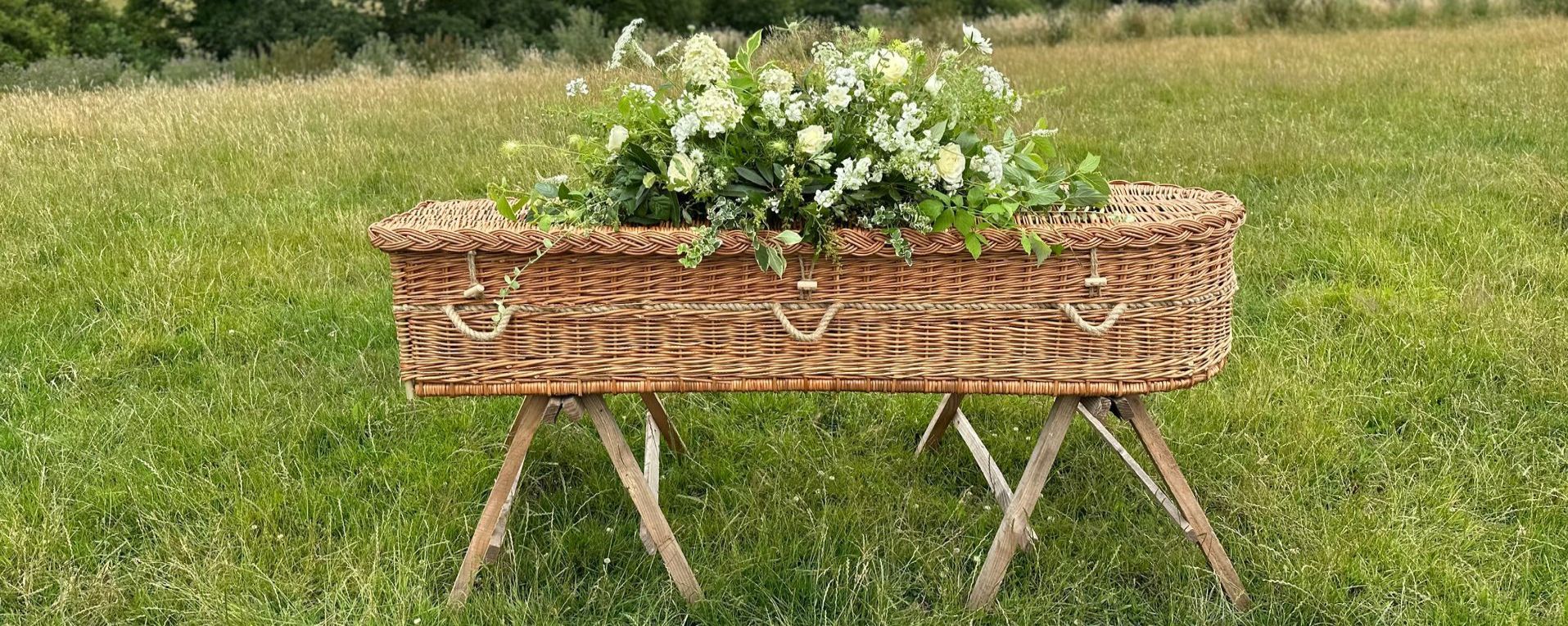How can I create a greener funeral






A "green funeral" refers to an environmentally friendly approach to death care, with a focus on sustainability and minimizing the ecological impact of burial or cremation. These types of funerals are designed to reduce waste, chemical usage, and the carbon footprint associated with traditional funeral practices. Here are some key elements often involved in a green funeral:
- Natural Burial: Natural or Woodland (Green) Burial Grounds are similar to cemeteries, however, with one key difference, they are managed according to ecologically sound principles, to create beautiful, nature-rich areas without the formality and memorials of traditional cemeteries. Instead of using conventional coffins made of wood or metal, which take years to decompose, a green funeral involves biodegradable coffins made of materials like wicker, cardboard, or bamboo. These coffins avoid the use of plastics or metal furnishings and are made from sustainable materials. A biodegradable coffin allows the body to decompose naturally, without the toxic chemicals (such as embalming fluids) used in traditional embalming processes. Memorial markers are limited and can include a wooden or slate marker, nature boxes or a planted tree. A biodegradable shroud or clothing made of natural fibers will be used.
- No Embalming: Many green funerals forgo embalming, which typically involves the use of formaldehyde and other chemicals that can be harmful to the environment. Instead, the body may be refrigerated or preserved in a more natural manner, depending on the timeline. Formaldehyde-free embalming products are available today.
- Eco-Friendly Coffins or Urns: Green funerals consist of natural, biodegradable coffins, urns, or shrouds. These materials break down more easily and cause less environmental harm compared to conventional funeral products.
- Sustainable Burial Practices: Some green funerals take place in natural burial grounds, where the focus is on preserving the land and maintaining its natural beauty.
- Floral Tributes: With most natural burial grounds only eco-friendly floral tributes will be allowed. This means it must not contain any floristry wire, plastics, cellophane or oasis. Your local natural burial ground will be able to give you guidelines on the type of floral tributes they allow in their grounds.
The main goal of a green funeral is to respect the earth and reduce the environmental impact of death care, offering a more sustainable and natural way to honor someone's life and legacy. Protecting the environment, preserving earths natural resources
Why Choose a Natural Burial
Burial grounds are places full of natural life and offer an ideal environment for peaceful reflection, within nature.
By choosing a green, woodland or natural burial every one of us will be contributing to the establishment, expansion and preservation of local ecosystems capable of sustaining a rich variety of natural biodiversity, and also preventing the harmful practices of conventional funeral practices from damaging our environment any further.
Adopting these principles will mean that we can all contribute in our own way to halting the effects of local environmental degradation, and on a wider scale climate change itself.
By taking life, through natural burial nature has found a way to give back life, as long as we all choose to do our bit.


Photo - Prestwold Natural Burial Ground
Courtesy of The Natural Burial Company
Natural or green burials / woodland burials not only use fewer resources, they help to preserve the delicate balance between us and nature, significantly enhancing the future of our environment long into the future, but crucially they also offer better value to each and every one of us that choose this option.
A natural burial encourages natural biodiversity, often providing life where a sterile ecology had previously existed, refurbishing derelict land or simply enriching immeasurably the surrounding local ecosystem. Wildlife and the flora and fauna are left to flourish, very much in their natural state. Minimal maintenance is required, enough to leave the grounds looking presentable. However, not the manicured lawns and surroundings, lines of headstones or graves and sterile ecosystems that are found at conventional cemeteries